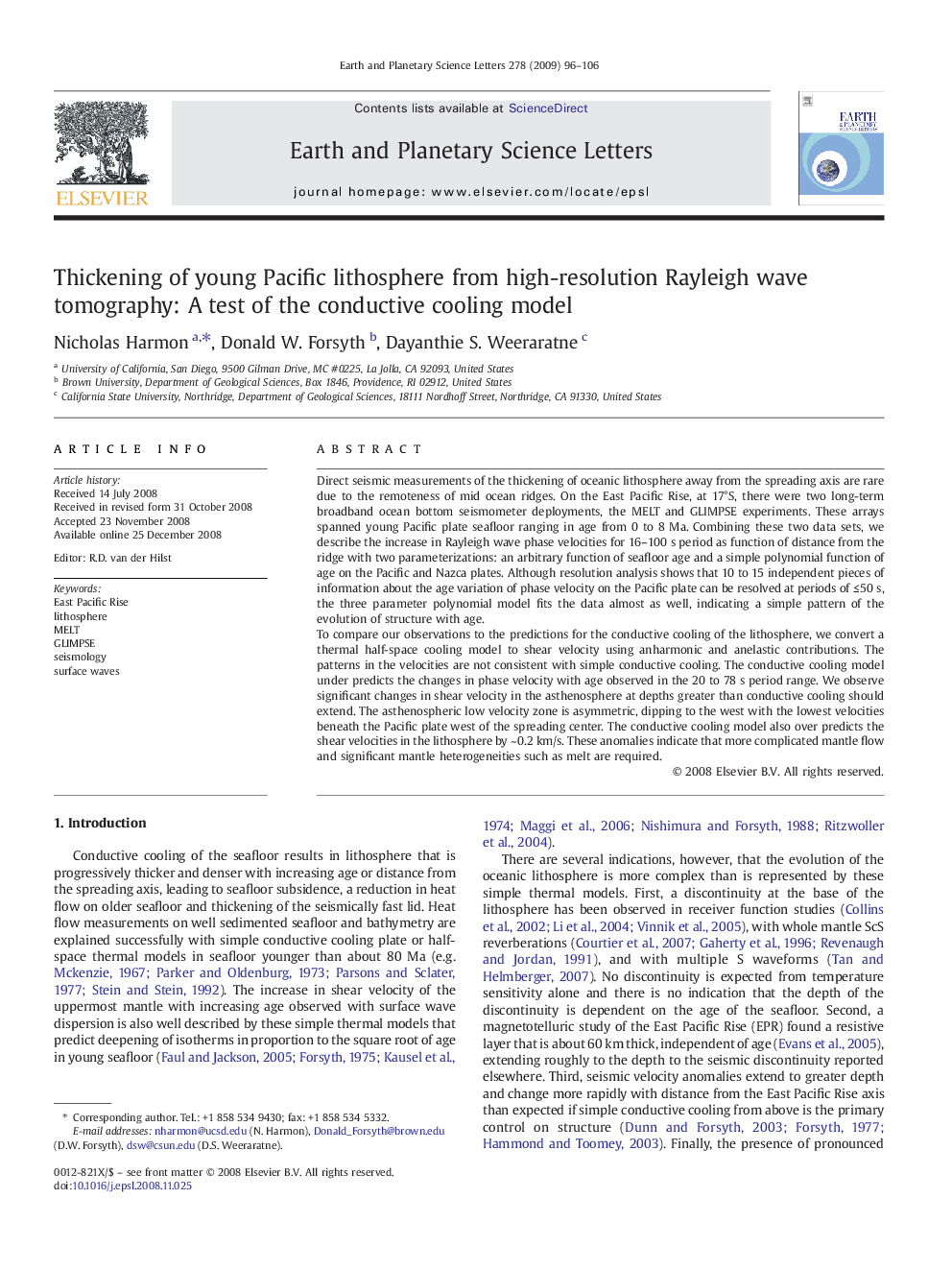| کد مقاله | کد نشریه | سال انتشار | مقاله انگلیسی | نسخه تمام متن |
|---|---|---|---|---|
| 4679307 | 1634880 | 2009 | 11 صفحه PDF | دانلود رایگان |

Direct seismic measurements of the thickening of oceanic lithosphere away from the spreading axis are rare due to the remoteness of mid ocean ridges. On the East Pacific Rise, at 17°S, there were two long-term broadband ocean bottom seismometer deployments, the MELT and GLIMPSE experiments. These arrays spanned young Pacific plate seafloor ranging in age from 0 to 8 Ma. Combining these two data sets, we describe the increase in Rayleigh wave phase velocities for 16–100 s period as function of distance from the ridge with two parameterizations: an arbitrary function of seafloor age and a simple polynomial function of age on the Pacific and Nazca plates. Although resolution analysis shows that 10 to 15 independent pieces of information about the age variation of phase velocity on the Pacific plate can be resolved at periods of ≤ 50 s, the three parameter polynomial model fits the data almost as well, indicating a simple pattern of the evolution of structure with age.To compare our observations to the predictions for the conductive cooling of the lithosphere, we convert a thermal half-space cooling model to shear velocity using anharmonic and anelastic contributions. The patterns in the velocities are not consistent with simple conductive cooling. The conductive cooling model under predicts the changes in phase velocity with age observed in the 20 to 78 s period range. We observe significant changes in shear velocity in the asthenosphere at depths greater than conductive cooling should extend. The asthenospheric low velocity zone is asymmetric, dipping to the west with the lowest velocities beneath the Pacific plate west of the spreading center. The conductive cooling model also over predicts the shear velocities in the lithosphere by ~ 0.2 km/s. These anomalies indicate that more complicated mantle flow and significant mantle heterogeneities such as melt are required.
Journal: Earth and Planetary Science Letters - Volume 278, Issues 1–2, 15 February 2009, Pages 96–106